A Quick Guide to Choosing the Perfect Pearl Color

Not all pearls are white.
As Oyster shells are different and multi-colored, so are the pearls they produce, which have colors ranging from black to blue, gold, pink/peach, yellow, and, of course, white!
Although there are artificially colored pearls, pearls are naturally colorful gemstones.
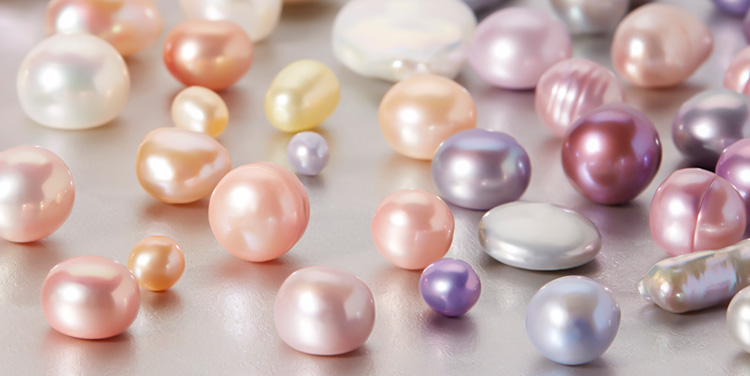
To satisfy your curiosity as to the many pearl colors we have, we have put together a list of different pearl colors and what they represent. So, scroll down the paragraphs below to discover more.
What are The Colors of Pearls?
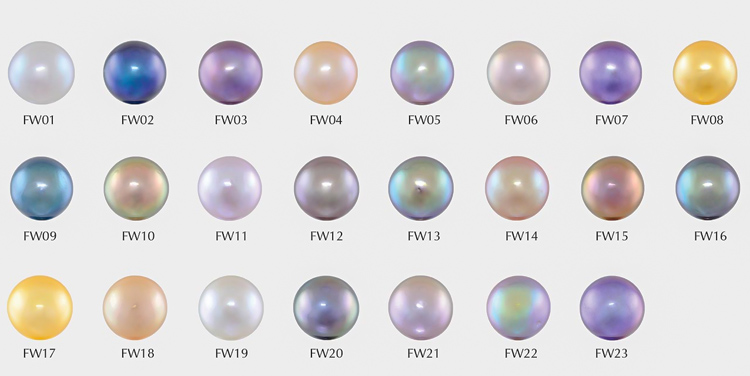
Here, we have different naturally occurring colors of pearls listed below;
Black Pearls
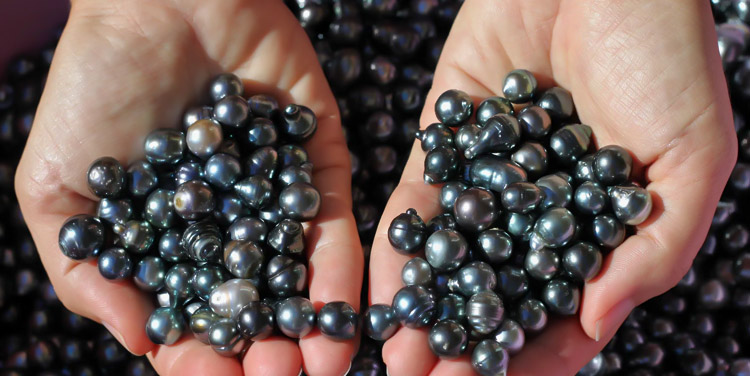
Black pearls are not rare to find especially among pearl lovers; however, it is not as popular as white Pearls.
Black pearls are symbolic of being chic and classy, powerful, wealthy, mysterious, and protective.
There are three varieties of Black pearls which include;
★Black Akoya Pearls
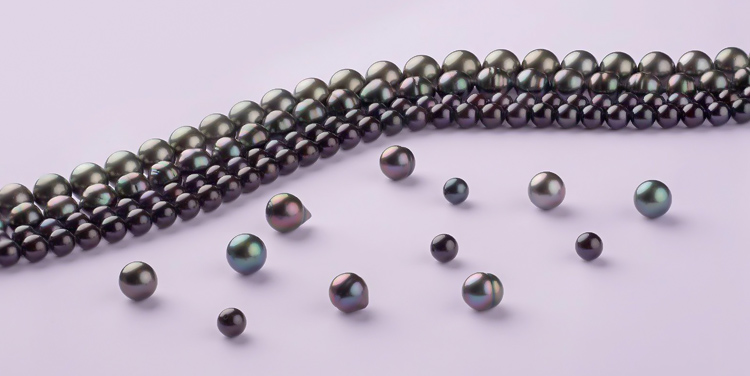
This variety of pearls is jet black with blue-black/green-black overtones created by saltwater oysters in Japan and China.
★Black Freshwater Pearls
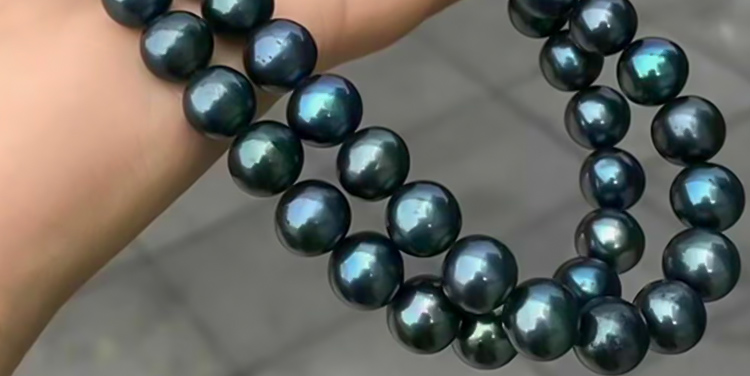
From the name, it is created by freshwater pearl mussels, mostly found in China.
The freshwater mussels produce a dark blue color with multi-colored overtones. This pearl type is the tiniest of all.
★Black Tahitian Pearls
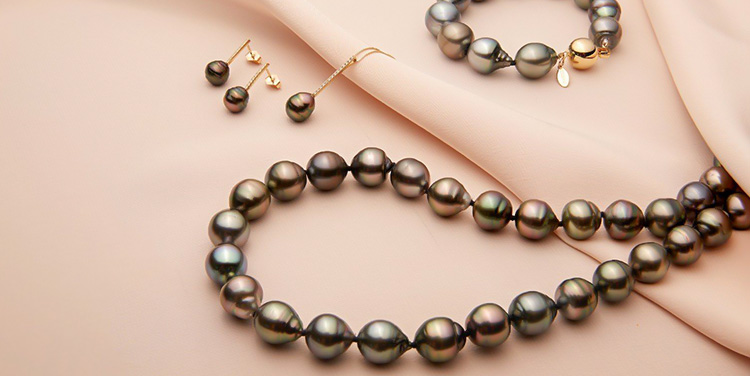
Like Black Akoya Pearls, this pearl is produced by saltwater oysters, black-lipped saltwater oysters found in the French Polynesia Islands.
It has green and silver/steel overtones and happens to be the largest.
Blue Pearls

The rarest of all the naturally occurring pearls is the blue pearl.
Although the blue pearl is not common, it's still in existence, and it symbolizes serenity, tranquility, and calmness.
There are three varieties of Blue pearls which include;
★ Blue-overtone Tahitian pearls

These are created by Pinctada margaritifera in the French Polynesia Islands and it has light silver colors with overtones of teal, violet, and blue-green.
★Blue Akoya Pearls
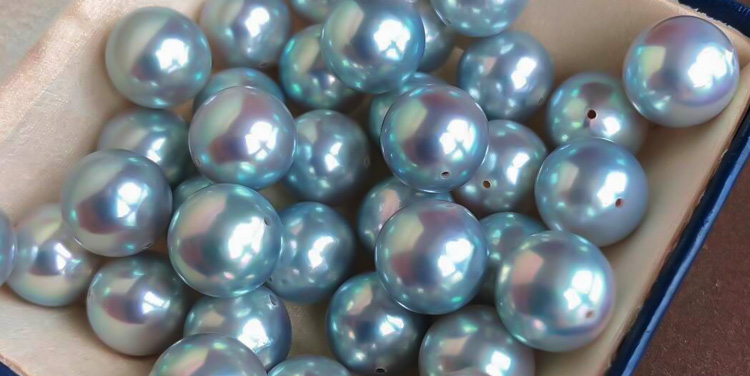
Blue Akoya pearls are created by Pinctada fucata martensii in Japan and Vietnam.
Its colors range from light gray-blue to deeper sky blue with an overtone of bright green, rose, and gold.
★Silver-Blue White South Sea Pearls
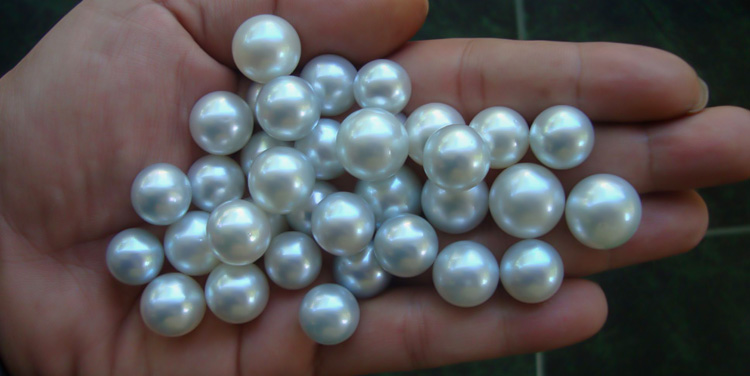
The silver-lipped saltwater oyster in Australia produces this pearl type.
Its body colors range from light silver-gray to deeper sky-blue colors with Silver and Aquamarine overtones.
Gold Pearls
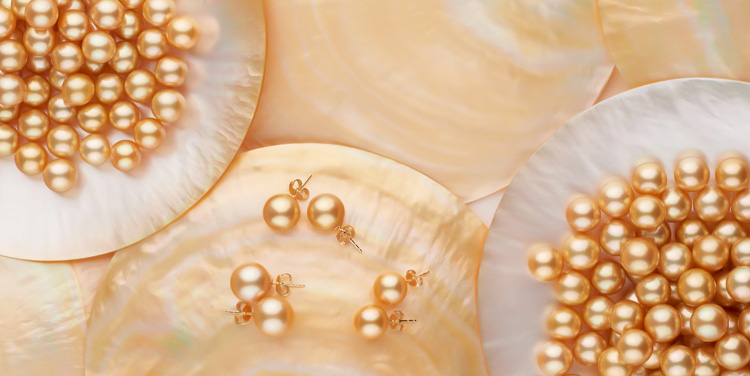
Naturally occurring gold pearls are among the largest pearls in the world but are not commonly seen like white pearls.
Gold pearls symbolize success, longevity, prosperity, and wisdom.
There are two varieties of Gold pearls which include;
★Golden Akoya Pearls
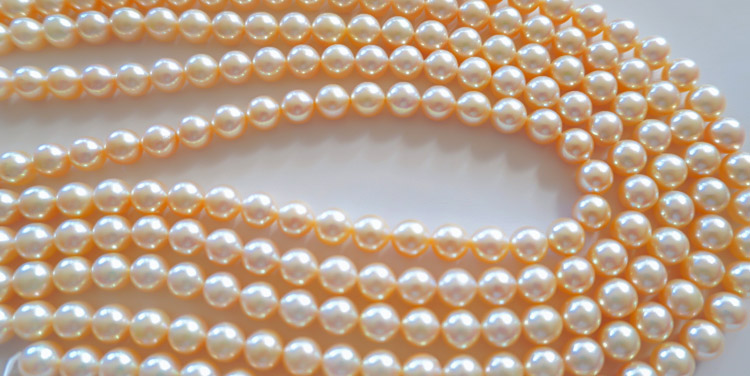
This is the naturally occurring gold pearl created by Pinctada fucata martensii, majorly in Vietnam.
Its colors range from pale Lemon yellow to deeper gold with overtones of violet, rose, and neutral gold.
★Golden South Sea Pearls
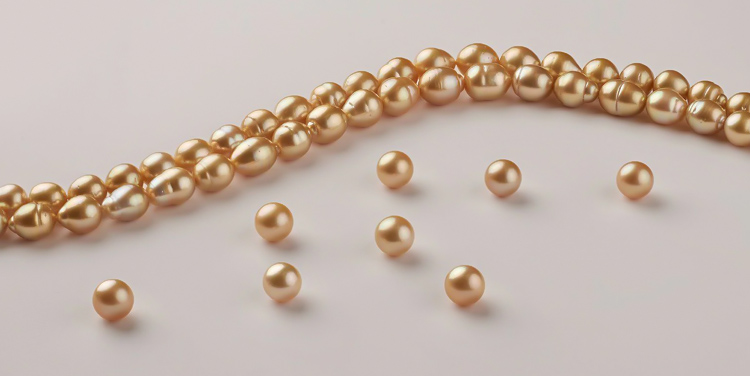
The Golden South Sea Pearls are cultured in the Philippine Islands and Australia by the gold-lipped saltwater oyster.
The body is primarily gold with overtones of silver and bronze.
White Pearls
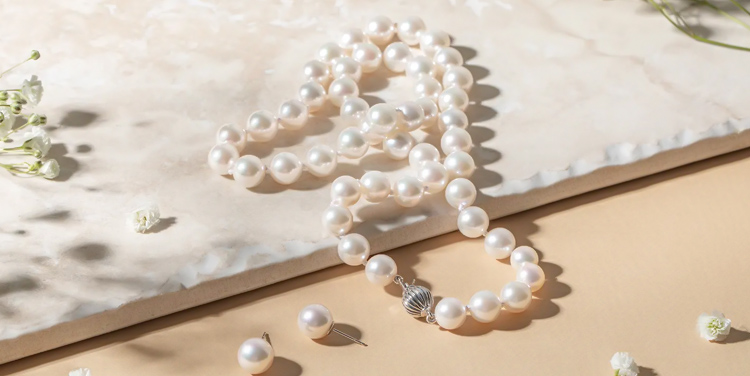
The most common type of pearl is the white pearl. White pearls are versatile and symbolize purity, peace, and love.
Over the years, white pearls have been among the favorite accessories of women, brides especially.
There are three varieties of naturally white-colored pearls, which include
★White Freshwater Pearls
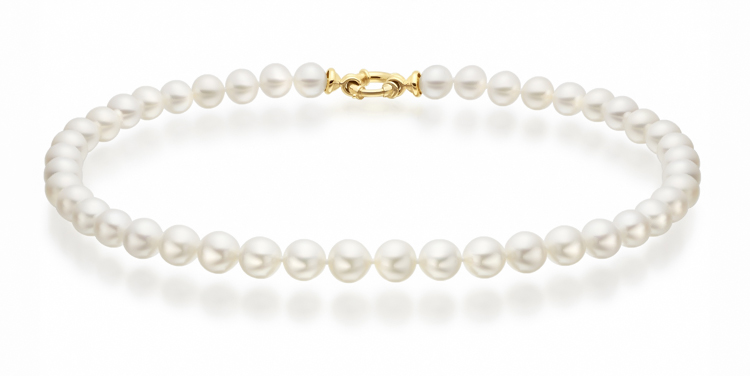
As the name suggests, it is produced primarily by freshwater pearl mussels in China. The body color is a cool "warm" white with cream and silver overtones.
★White Akoya Pearls

Saltwater oysters and Pinctada fucata martensii create these types of pearls in Japan and Vietnam. The pearl color is a cool white with silver and greenish overtones.
★White South Sea Pearls

These pearls are created by silver-lipped saltwater oysters in Australia and the Philippine Islands. It has a cool white body color with bright white and pink overtones.
Multicolor
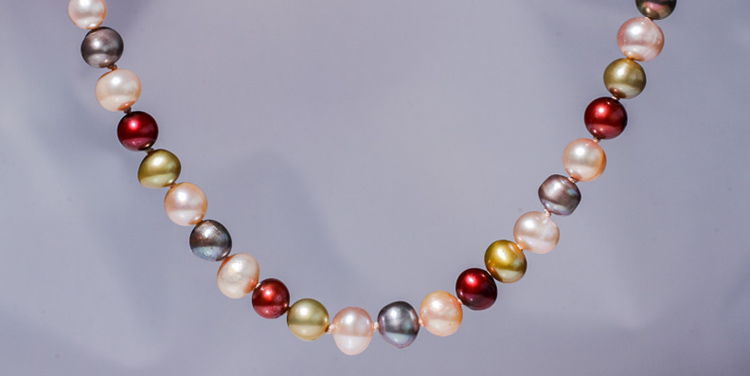
How do oysters create different pearl colors?
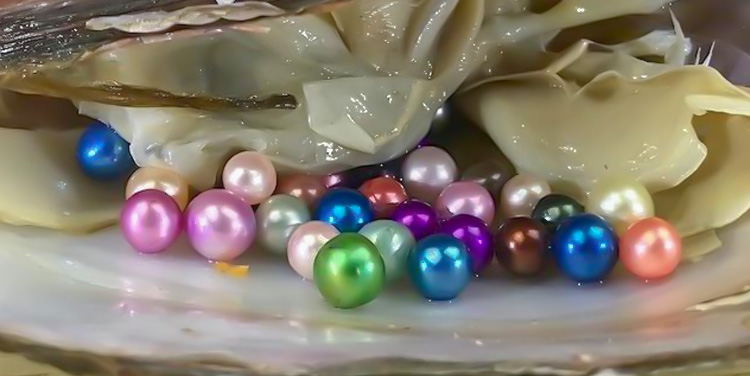
Oysters can create various pearl colors irrespective of their shell colors.
However, black-lipped saltwater oysters mainly create black pearls, and hardly any other oysters produce black pearls.
The nacre secreted by oysters is the major component of pearls.
The nacre secreted by the oyster often takes the color of the outer shell and oyster lips, which eventually form a colored pearl.
Silver-lipped saltwater oyster creates white pearls with bright white overtones while black-lipped saltwater oyster creates black pearls with silver overtones.
The extent of the thickness of the nacre can also cause oysters to create different colors.
The thickness and quality of a nacre influence the surface quality and luster of pearls as well as its overtones.
The marine environment of the oysters can also influence the different pearls' color in relation to the nutrients and trace elements present in the water.
What determines pearl color?

Many factors determine the different pearls' color created by oysters:
❖The type of oysters is freshwater or saltwater oysters.
❖The amount of nacre layers present; the more the nacre, the thicker the nacre, and the brighter the pearls' color.
❖The quality and thickness of the nacre layers; thin nacre lining produces less lustrous pearls.
What is a nacre?

A nacre is an organic crystal-like substance or mineral that is secreted by oysters on the inner shell linings in response to irritants, foreign substances, and parasites that attempt to enter inside the oyster shell.
In oysters, the nacres are secreted in layers, and over time, multiple nacres are formed, which results in pearls.
What's that color under those layers of nacre?
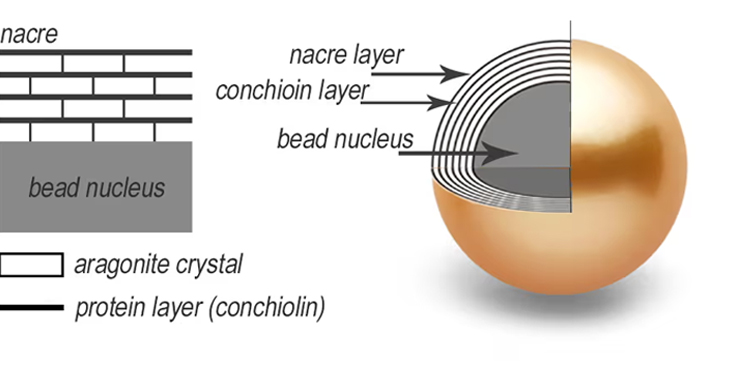
One characteristic feature of pearls is their iridescent nature, which occurs as a result of the thick layer of nacre.
When light shines on the nacre, it exudes different colors, causing the eyes to see various colors.
Depending on the nacre and oyster shell, there are different colors formed by the layers of nacre.
The conchiolin, an organic substance present in pearls that is also responsible for the different pearl colors, also reflects its colors under the nacre, showing various colors.
Pearl buying tips

Generally, pearls are expensive; however, naturally occurring colored pearls are more valuable and expensive than cultured ones.
Natural pearls are also very rare and comprise multiple nacre layers, which most cultured pearls do not rarely possess.
Rare colored and exotic colored pearls are more treasured than pearls with regular colors which makes them much more expensive.
Before buying pearls either in a jewelry shop or in a mall, there are some tips to consider;
❖Although choosing pearl colors is more of a personal preference, there are some pearl colors to take note of.
Multi-colored pearls are perfect accessories to compliment your casual and fun look. For your formal wear and evening attires, black colored pearls are a perfect match for your outfit.
For a touch of feminine but sophisticated and elegant look, soft colors like pink/peach pearls, white pearls, and lavender pearls are good pearls to wear.
❖Do not hesitate to ask the jeweler about the type of pearl you want to purchase.
Some pearls are cultured and dyed to resemble naturally colored pearls, and unless you're told, you might conclude that they are naturally colored pearls.
This is very common among pearls with deep and exotic colors such as Aubergine, Black, Cherry, Gray, and Pistachio colors.
❖Always observe the strand of pearls you want to buy and once you notice that it appears uniform, check closely because the pearls are likely to be treated with color dyes.
To confirm this, you can check the drill holes of pearls for residual dye content.
Conclusion

Oysters can create various pearl colors ranging from white and black, which are very common, to rare colored pearls like gold, blue, pink, yellow, and multi-colored pearls.
The color of the oyster shell, the thickness of the nacre, and the oyster environment, however, determine the variant colors.
Do well to compliment your casual and formal look with multi-colored pearls the next time you're starting; they speak elegance!


Leave a Comment